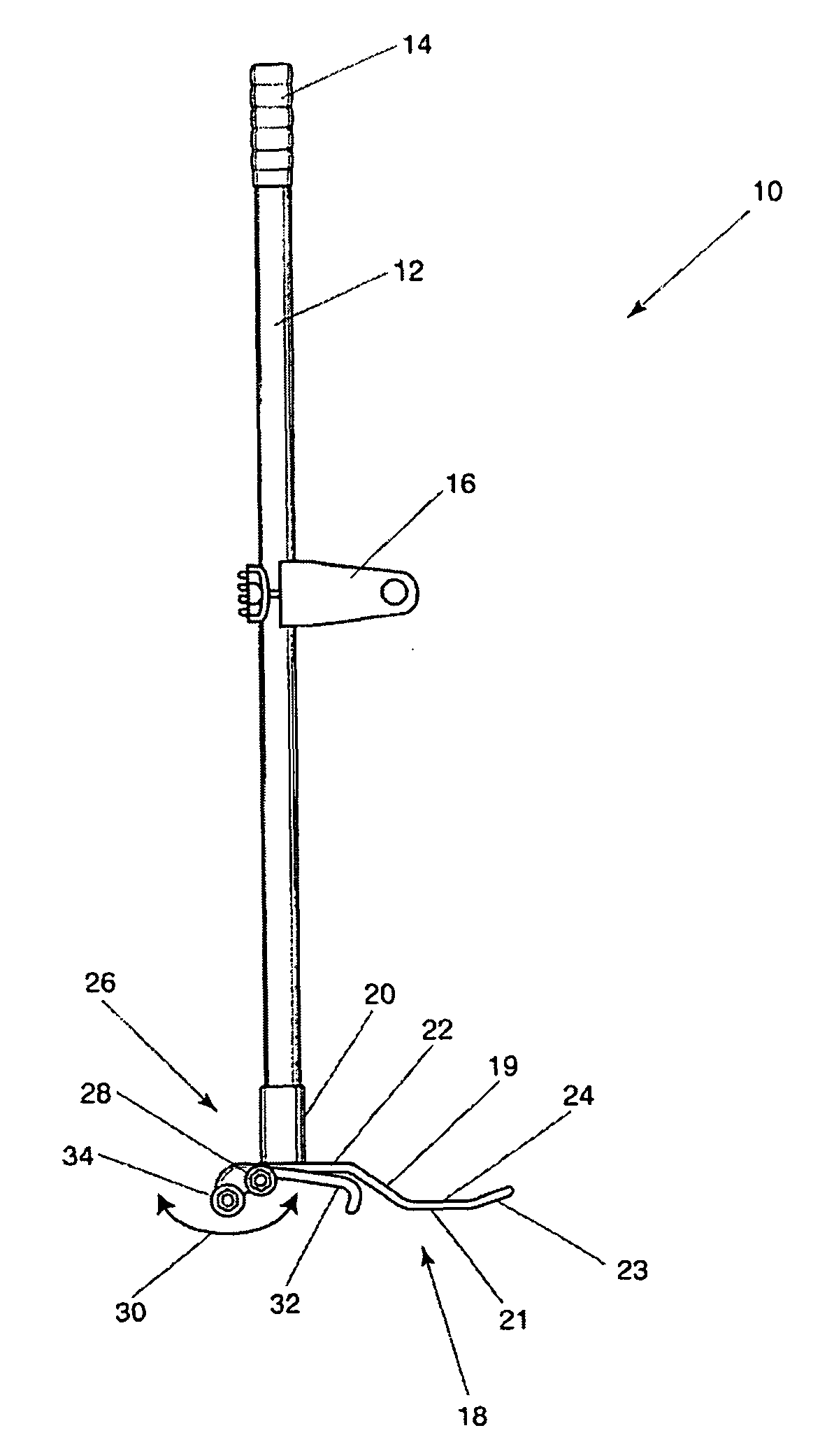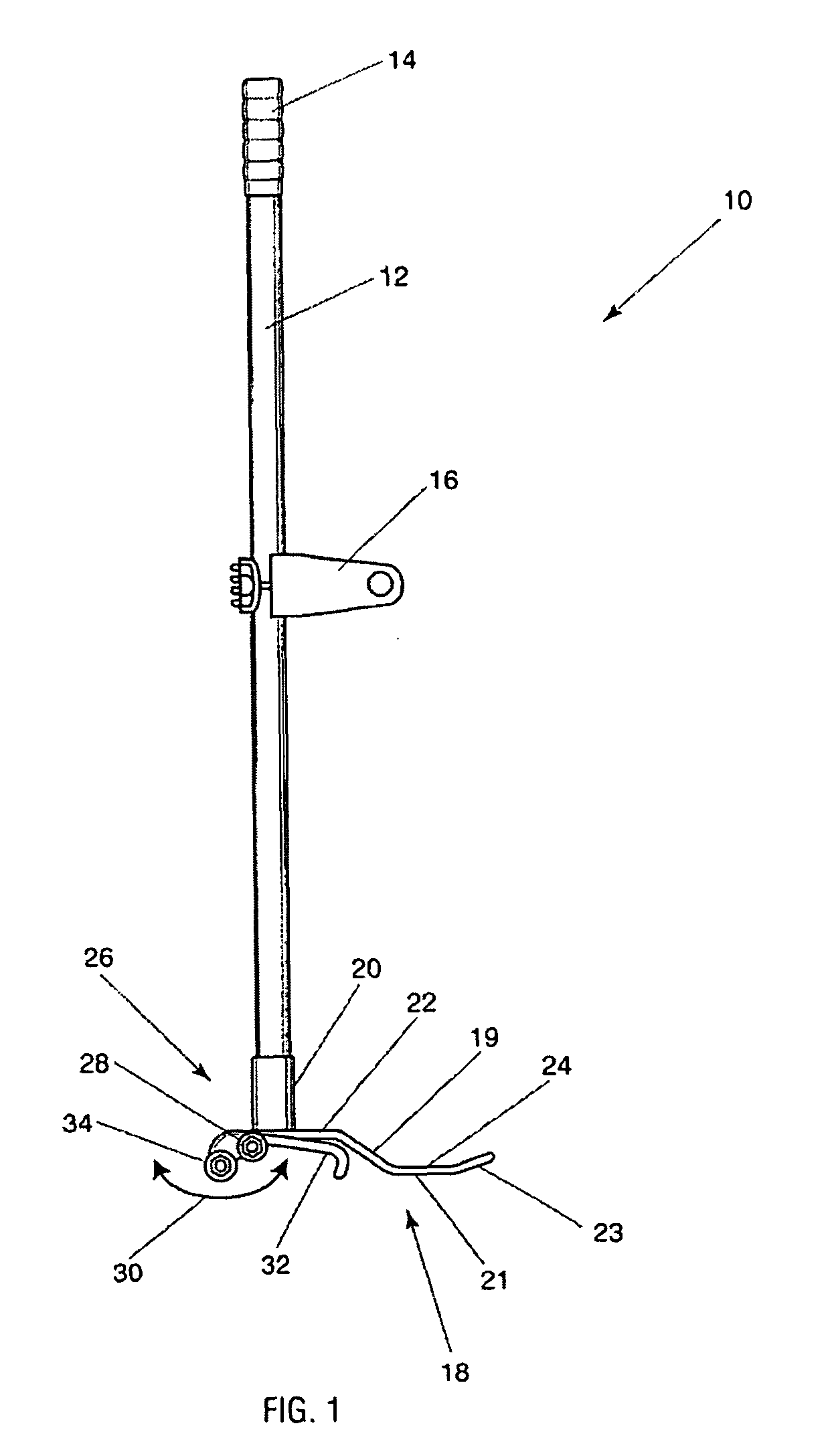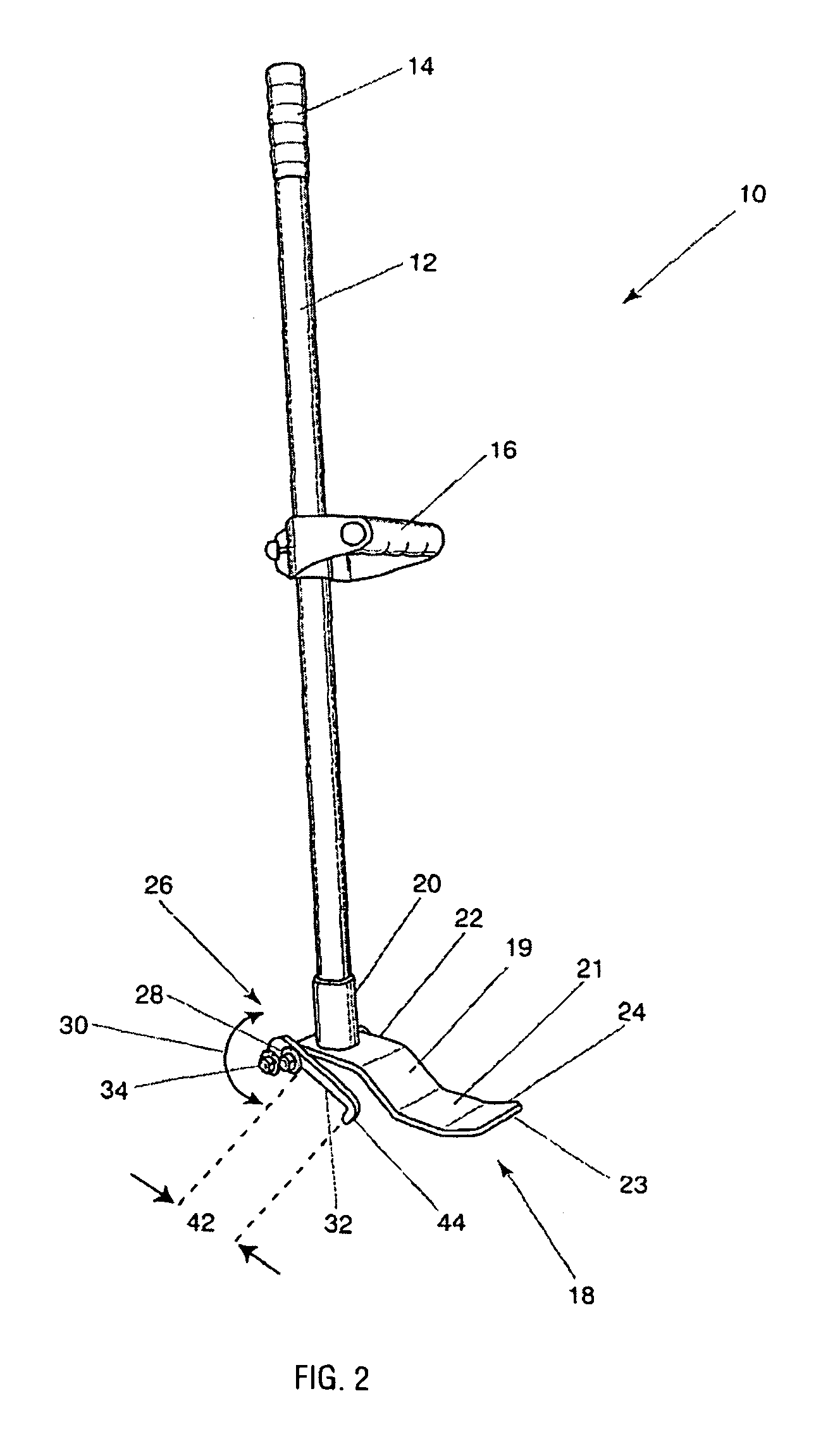Portable tire demounting tool
a portable, tire technology, applied in the field of tire tools, can solve the problems of inability to address some key factors, lack of functionality to adaptability, and the number of inherent limitations of the current method and apparatus for tire demounting
- Summary
- Abstract
- Description
- Claims
- Application Information
AI Technical Summary
Benefits of technology
Problems solved by technology
Method used
Image
Examples
second embodiment
[0057]FIG. 12 is a side cut away view of tire demount tool 100 for light truck, trailer, and automotive tires inserted into first bead 138 of tire 140 and wheel assembly 150 in the early stage of operation. Prying foot 118 is inserted between the top of rim flange 136 and first bead 138 of tire 140. Dual rim hooks 132 are positioned to reach below and past rim flange 136 on engagement hooks 144. Tool 100 is now properly inserted and in position for the removal of first bead 138. FIG. 12 further illustrates the use of drop center bead wedge 170 in operation. Drop center bead wedge 170 is secured in place with a downward motion of pressure applied on the top side of rim retainer 152, on an opposite side of tire demount tool 100, as shown. Wedge spacer 154 and side wall skid 156 force first bead 138 and top tire side wall 148 into the drop center 160 of wheel assembly 150 effectively allowing for free movement of first tire bead 138 during the demounting process.
[0058]FIG. 13 is a side...
third embodiment
[0059]FIG. 14 is a side view and FIG. 15 is a perspective view of retractable screw assembly 200 for the mechanically retractable tire demount tool 300. The preferred embodiment of retractable screw assembly 200 consists of a hex head threaded drive bolt 202, a flat washer 204, a square weld-in block bushing 206, a bushing retainer 208, and a weld-in threaded block nut 210. Retractable screw assembly 200 is the drive mechanism for demount tool 300.
[0060]FIG. 16 is a side view and FIG. 17 is a perspective view of a third embodiment of a retractable, tire demount tool 300. This embodiment is useful for the removal of the second or lower bead. These tires tend to be harder to manage and result in tearing or stretching the bead to render the tire useless. The use of this embodiment to remove the first bead easily peels off the bead with no bead tearing or undue bead stretching, thus preventing ruining of the tire. Retractable tire demount tool 300 consists of a hollow handle portion 312...
PUM
 Login to View More
Login to View More Abstract
Description
Claims
Application Information
 Login to View More
Login to View More - R&D
- Intellectual Property
- Life Sciences
- Materials
- Tech Scout
- Unparalleled Data Quality
- Higher Quality Content
- 60% Fewer Hallucinations
Browse by: Latest US Patents, China's latest patents, Technical Efficacy Thesaurus, Application Domain, Technology Topic, Popular Technical Reports.
© 2025 PatSnap. All rights reserved.Legal|Privacy policy|Modern Slavery Act Transparency Statement|Sitemap|About US| Contact US: help@patsnap.com



